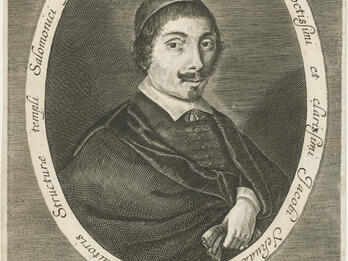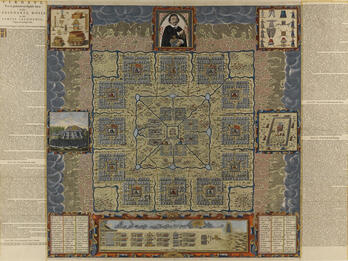Dāniyāl-nāmah (The Book of Daniel)
Khwājah Bukhārā’īā
1606
Daniel in the Lions’ Den
How Darius Returned to His Palace and Went to Sleep Grieving
Creator Bio
Khwājah Bukhārā’īā
The name Khwājah Bukhārā’īā means “Bukharan master.” This, together with the Judeo-Persian dialect used in the poet’s only known composition, a verse retelling of the book of Daniel with numerous elaborations, indicates that the poet hailed from Bukhara. However, no further details are known about him. His book of Daniel, which numbers approximately 2,200 couplets divided across eighty-eight chapters, was completed in 1606. It demonstrates that the poet was a scholar of great erudition, well acquainted with the Torah, commentaries, midrashim, and apocryphal literature, as well as Iranian Jewish poetry. Indeed, he drew on many sources, also introducing his own creative additions (such as the dialogue between Daniel and the lions), in elaborating on the biblical narrative. Likewise, he was clearly familiar with classical Persian poetry. In particular, the pessimistic outlook of Sufi poetry is reflected in this work, and Iranian epic depictions influenced the vivid portrayals of battlefield scenes. The poet’s Jewish faith is also evident in the repeated expressions of the hope for redemption.
Related Guide
Early Modern Rabbis and Intellectuals on the Move
Carrying books and knowledge, itinerant rabbis and scholars traveled between communities, facilitating cultural exchange.
Related Guide
Education and Scholarship
The early modern period featured educational reforms, anti-Christian polemics, and growing Jewish university participation.
You may also like
Keli yakar (Precious Ornament)
Sifte da‘at (Lips of Knowledge): On Genesis
Shete yadot (Two Hands): Or Torah (The Light of Torah)
Melits yosher (Upright Advocate)

Portrait of Jacob Judah Leon Templo



